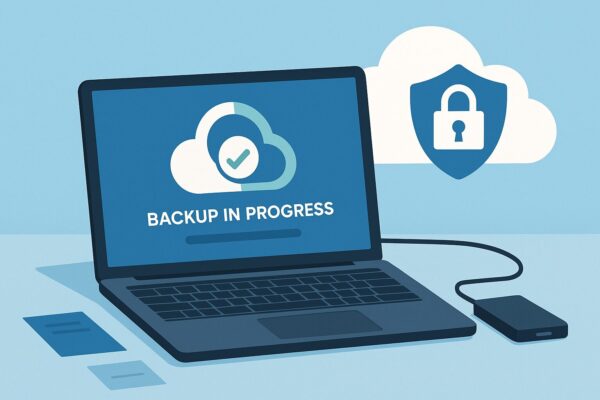
One day, your files might simply disappear. No warning. No second chances. Hard drive failure, ransomware, accidental deletion—data loss can strike anyone, anytime.
This guide is your complete roadmap to protecting your important files, photos, documents, and memories from unexpected loss. Whether you’re new to backups or want to improve your current setup, we’ll walk you through everything step by step. Let’s make sure your digital life stays safe—starting today.
Why You Should Never Skip Backups
Data loss is more common than you think. And when it happens, it’s often too late. Here are just a few examples of what could go wrong:
- Hard drive or SSD failure
- Malware or ransomware infection
- Windows update causing critical errors
- Accidental deletion or overwriting
- Theft, fire, or physical damage
With proper backups, you can recover quickly and painlessly. Backups turn disaster into a minor inconvenience.
Backup Basics: Understanding the 3-2-1 Rule
The golden rule of data protection is the 3-2-1 backup rule:
| Rule | Details |
|---|---|
| 3 | Have at least 3 copies of your data (original + 2 backups) |
| 2 | Store backups on 2 different types of media (e.g., external drive + cloud) |
| 1 | Keep at least 1 backup off-site (e.g., cloud or remote location) |
Backup Option 1: External HDD or SSD
This is the simplest and most beginner-friendly method. Just copy your important files to an external drive.
Pros: No internet needed, fast transfers, relatively inexpensive.
Cons: Can be lost or damaged, needs to be stored safely.
You can also use built-in tools like Windows “File History” or “Backup and Restore”.
Backup Option 2: Cloud Storage
Cloud backups store your files online, making them accessible anytime, anywhere—even if your PC is lost or destroyed.
| Service | Free Storage | Paid Plans |
|---|---|---|
| OneDrive | 5GB | 100GB+ (bundled with Microsoft 365) |
| Google Drive | 15GB | 100GB+ (via Google One) |
| Dropbox | 2GB | 2TB+ (monthly plans) |
Tip: Always use strong passwords and enable two-factor authentication for cloud services.
Backup Option 3: System Image
A system image is a complete copy of your Windows setup—files, apps, and settings. It’s useful when your system is totally corrupted and you want to restore everything as it was.
Pros: Full recovery in case of disaster.
Cons: Large files, not suitable for restoring individual files.
Backup Option 4: USB Flash Drive / SD Card
These are portable and handy for small amounts of data (e.g., photos, documents). Great as a quick, secondary backup.
Warning: USB drives are easy to lose or damage. Never rely on one alone.
Backup Option 5: Automatic Backup Software
If you don’t want to remember to back up manually, use backup software. It can schedule backups, keep multiple versions, and sync with drives or the cloud.
Popular tools include EaseUS Todo Backup, AOMEI Backupper, and Macrium Reflect.
Backup Option 6: NAS (Network Attached Storage)
A NAS is like your personal file server at home. It connects to your Wi-Fi and can be accessed by multiple devices in your home.
Pros: Centralized storage, accessible from PCs and smartphones.
Cons: Setup can be complex, cost is higher (~$200+).
Know How to Restore Your Backups
- Test your backups regularly to ensure they work.
- Learn how to restore from your backup method (cloud, image, etc.).
- Print or write down steps for recovery—especially for full system images.
Backup is only useful if you can restore. Practice once before disaster strikes—so you’re confident when it really matters.
How Often Should You Back Up?
| Usage Pattern | Recommended Frequency |
|---|---|
| Daily use (work, creative) | Daily or every time you use your PC |
| A few times per week | Once a week |
| Occasional use only | Once a month + after updates |
Don’t wait until something goes wrong. Backups are prevention, not cure.
Final Thoughts: Backups Are a Habit, Not a Hassle
Many people think “I’ll do it later,” but later often becomes never—until it’s too late. Backups don’t need to be complicated or expensive.
Start small. Use what you already have — cloud storage or an old external drive — and build from there.. Once you’re comfortable, consider automating or expanding your setup.
Protect your memories. Safeguard your work. And give yourself peace of mind—because one day, you’ll be glad you did.
✔️You might also find these helpful:
▶︎How to Fix Display Issues After Windows Update (2025 Guide)
▶︎Windows 10 Backup Error: How to Fix ‘Sorry, We Couldn’t Back Up Your PC’
💡 Looking for more tips? Check out our full list of Windows Help Guides.


